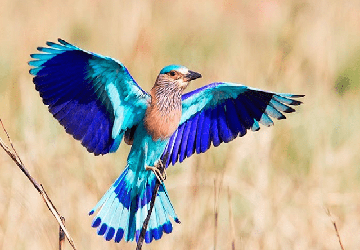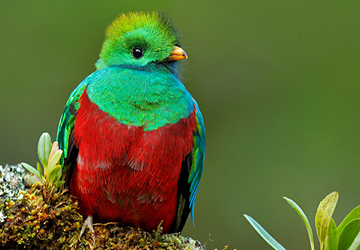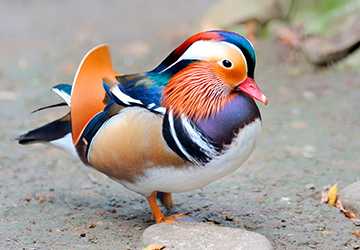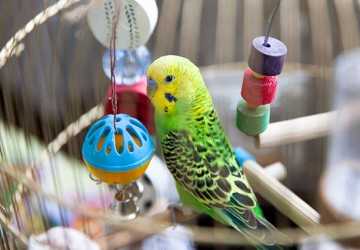The World of Exotic Birds: Species and Care
Birds have always been a source of fascination for humanity. Their vibrant colors, unique calls, and the sheer diversity of species make them captivating subjects of admiration and study. The intrigue deepens, especially when we delve into the realm of rare and unique bird species. From understanding the intricacies of the diet of exotic birds to the complexities of creating habitats for exotic birds and deciphering their intricate behaviors, caring for these winged wonders is both a challenge and a joy.
Rare and Unique Bird Species
The world boasts a vast array of bird species, with many being classified as exotic. These rare and unique bird species might be defined by their limited geographical locations, endangered status, or distinct appearances. Prime examples are birds such as the resplendent quetzal in Central America or the critically endangered Philippine eagle. The harpy eagle, with its fierce appearance, impressive wingspan, and the radiant colors of the Gouldian finch, are more additions to this exclusive list. Every exotic species carries a tale of evolution, environmental adaptation, and a testament to nature's artistic prowess.

Diet for Exotic Birds
When it comes to the diet for exotic birds, one-size-fits-all doesn't apply. Each species has evolved to thrive on a specific diet based on its natural Habitat. For instance, the diet of a toucan, with its giant bill, primarily consists of tropical fruits. In contrast, the African grey parrot requires a diet of nuts, fruits, and vegetables. It's essential to research each bird's dietary needs meticulously. In captivity, a well-balanced diet is crucial for their health and longevity, often combining commercial pelleted diets with fresh fruits, vegetables, and occasional protein sources like insects or cooked lean meats. Regular consultations with avian veterinarians can ensure that these beautiful creatures receive all the necessary nutrients.
Creating Habitats for Exotic Birds
Creating habitats for exotic birds is a delicate balance between replicating their natural environments and ensuring safety. Habitat isn't just a cage; it's a home. Aspects like the size of the enclosure, the type of perches, toys for mental stimulation, and even the substrate all play a role. For instance, a bird native to rainforests would thrive better in a humid environment, requiring regular misting. Birds from arid regions need less humidity but more opportunities for dust baths. Proper lighting is paramount, especially for birds that hail from areas with distinct day-night cycles. Regular cleaning and providing fresh water are also crucial elements in habitat creation.
Understanding Exotic Bird Behaviour
Understanding exotic bird behavior is critical to genuinely appreciating and caring for exotic birds. Birds can display a range of emotions and behaviors, from singing and vocalizations to nesting and mating dances. Observing them provides invaluable insights into their well-being. For example, a change in vocal patterns might indicate stress or illness. Some species might be more prone to aggressive or territorial behaviors and require special handling or environmental adjustments. Birds are also brilliant, with many species capable of problem-solving, mimicking, and even forming deep bonds with their human caregivers. Engaging them with puzzles, toys, and regular interaction can ensure mental stimulation and emotional well-being.
Challenges Faced by Exotic Birds in the Wild
The natural world is facing unprecedented change. Climate alterations, habitat destruction, and human interventions have threatened many rare and unique bird species. For instance, the rapid deforestation of tropical rainforests has imperiled birds like the exotic Amazonian parrots, forcing them out of their natural habitats and sometimes into areas where they struggle to find food or face new predators.
The illegal pet trade has also contributed to the dwindling numbers of some species. Birds, especially those with vibrant colors or unique vocal abilities, are highly prized, leading to them being captured and sold, often in harsh conditions that many don't survive.

Conservation Efforts for Exotic Birds
Given these birds' myriad challenges, conservation has become a clarion call for ornithologists and bird lovers worldwide. Sanctuaries and reserves are being established in various regions to protect and sometimes rehabilitate endangered species. Successful breeding programs, both in the wild and captivity, aim to increase numbers, especially for those on the brink of extinction.
Adopting sustainable practices, like eco-tourism, educates the public about these fascinating creatures and generates funds necessary for conservation. Many organizations also work towards halting illegal trade, rescuing trapped birds, and rehabilitating them.
Ethical Implications of Keeping Exotic Birds
While many people love having an exotic bird as a pet, there are ethical considerations to weigh. Understanding strange bird behavior is fundamental. Many of these birds have vast territories in the wild, fly long distances, and engage in complex social interactions. Some of these natural behaviors are restricted in captivity, even with the best care.
Hence, potential bird owners must ask themselves if they can provide for the bird's physical needs and emotional and psychological well-being. Research, education, and awareness play a pivotal role. Prospective owners should also consider adopting birds from shelters rather than buying them, helping curb the demand from the pet trade.
Contribution to Ecosystems
Exotic birds, especially the rare and unique bird species, play pivotal roles in the ecosystems they inhabit. As pollinators, seed dispersers, and predators, they ensure the delicate balance of their environments. For example, the hummingbird's rapid wing movements and long beaks make them vital pollinators for many flower species. Birds like hornbills and toucans consume fruits and, in the process, disperse seeds through their droppings, aiding in forest regeneration. Recognizing the ecological significance of these birds is paramount, emphasizing the need for conservation and habitat preservation.
Anatomical Marvels and Adaptations
Exotic birds are visual delights and marvels of evolution, showcasing many unique anatomical features. The harpy eagle's talons, as powerful as a bear's claws, enable it to snatch medium-sized mammals. The beak of a vibrant and oversized toucan is deceptively lightweight due to a network of air-filled bones, allowing for efficient fruit consumption. By understanding exotic bird behavior and anatomy, we gain insights into their survival strategies and the intricate web of life they are a part of.




